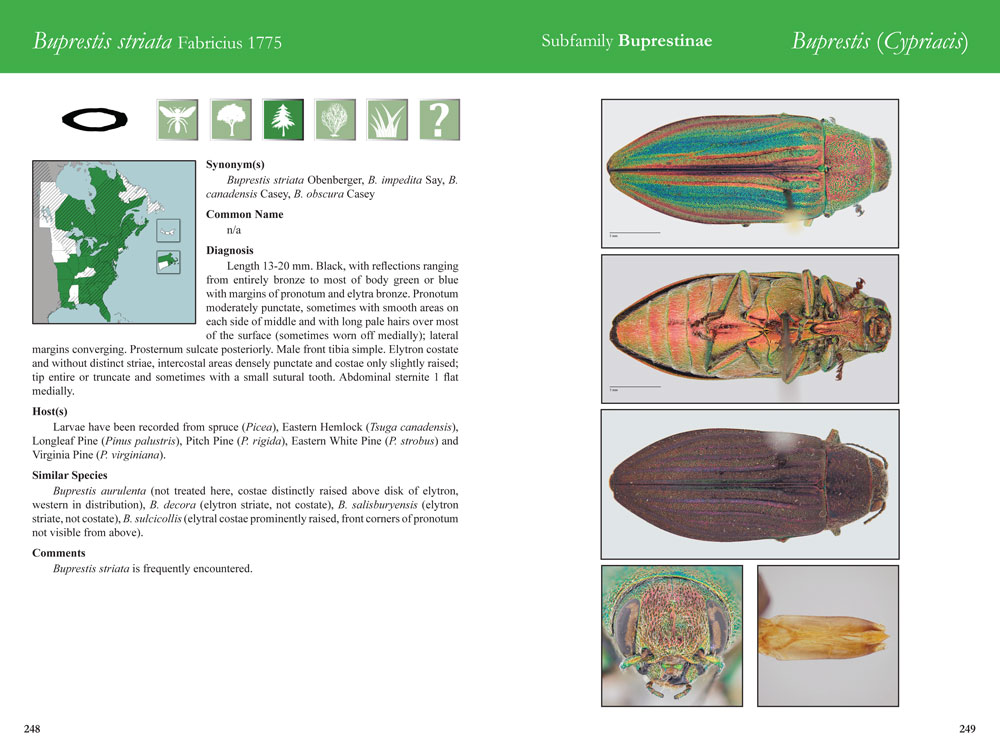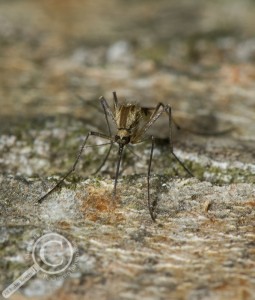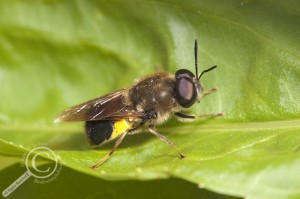Following the accidental introduction of Emerald Ash Borer (Agrilus planipennis) in the mid 1990’s, and its subsequent detection in the Detroit, MI/Windsor, ON area in 2002, jewel beetles (Buprestidae) have become front page news in many communities in eastern North America. As federal, provincial, state and municipal governments initiate jewel beetle monitoring projects to track the expanding range of Emerald Ash Borer, many other species are captured as by-catch, which has subsequently lead to an increased interest in these bold and beautiful beetles.
Luckily, North American buprestid taxonomists have been working diligently with these charismatic & economically important beetles for decades, and have described and classified nearly all the eastern North American fauna. With a solid taxonomic base to build upon and an increasing demand for accessible identification resources, a partnership was formed between the Canadian Food Inspection Agency, the University of Guelph Insect Collection and the Invasive Species Centre to create a user-friendly resource for jewel beetle identification. Today, I’m happy to announce the imminent publication of a Field Guide to the Jewel Beetles of Northeastern North America!
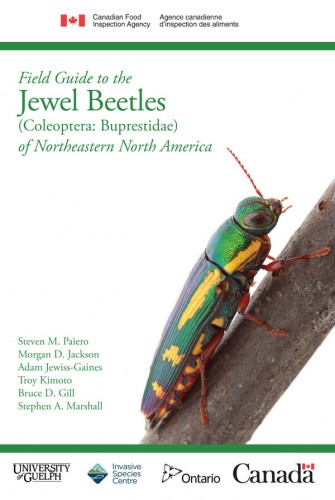
Cover photo of Buprestis rufipes by Ted MacRae
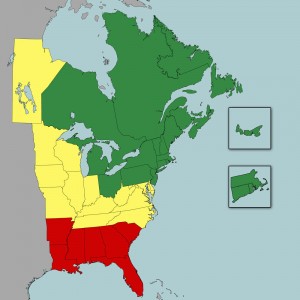
Green – Guide considered comprehensive; Yellow – Majority of fauna included in guide, may require additional resources; Red – Guide not representative of local fauna, be sure to consult additional resources.
This 411 page field guide (6×9″) covers the 164 jewel beetle species known from northeastern North America, and also includes 2 identification keys to the 23 genera in the region: one a technical key adapted from previously published works, and the other a “field key”, designed for use with a hand lens or digital camera and which uses characters that are more easily observed. In addition, we’ve included a short section on collecting, preparing and storing jewel beetles, as well as an illustrated tutorial on how to dissect male genitalia. Fully labelled morphological maps and a glossary of terms that may be found in the primary literature are provided to help non-specialists use both this field guide, and also any other buprestid literature they may need to consult.
Each species in the guide is fully illustrated with high magnification colour photos of the dorsal & ventral habitus, head and male genitalia (plus additional colour morphs or variations where possible), and a review of taxonomic synonyms, ESC & ESA approved common names, and all known larval host plants is provided in addition to thorough morphological diagnoses, characters useful for differentiating similar species, and notes on species abundance, habitat preference and economic importance. On top of all this, we’ve also included a number of other tools and resources to help with species-level identification in the absence of keys. Take a look at the Emerald Ash Borer page to see what to expect throughout:
So how can you get your copy? The Field Guide to the Jewel Beetles of Northeastern North America is now available by calling 1-800-442-2342 UPDATE: Sorry, hard copies are all sold out. PDFs are available here. The CFIA is making this field guide completely FREE. Yes — totally, 100% FREE, including international shipping. This book won’t be available through traditional or online bookstores, so we need your help in spreading the word about it. If you know researchers/naturalists/citizen scientists who may find this field guide useful, please let them know how they can get copies of their own, because we’d love to see the book in the hands of anyone with an interest in natural history and entomology!
If you have any questions about the field guide, please don’t hesitate to ask, either in the comments below or via email, and my co-authors and I hope you enjoy using it as much as we enjoyed creating it!
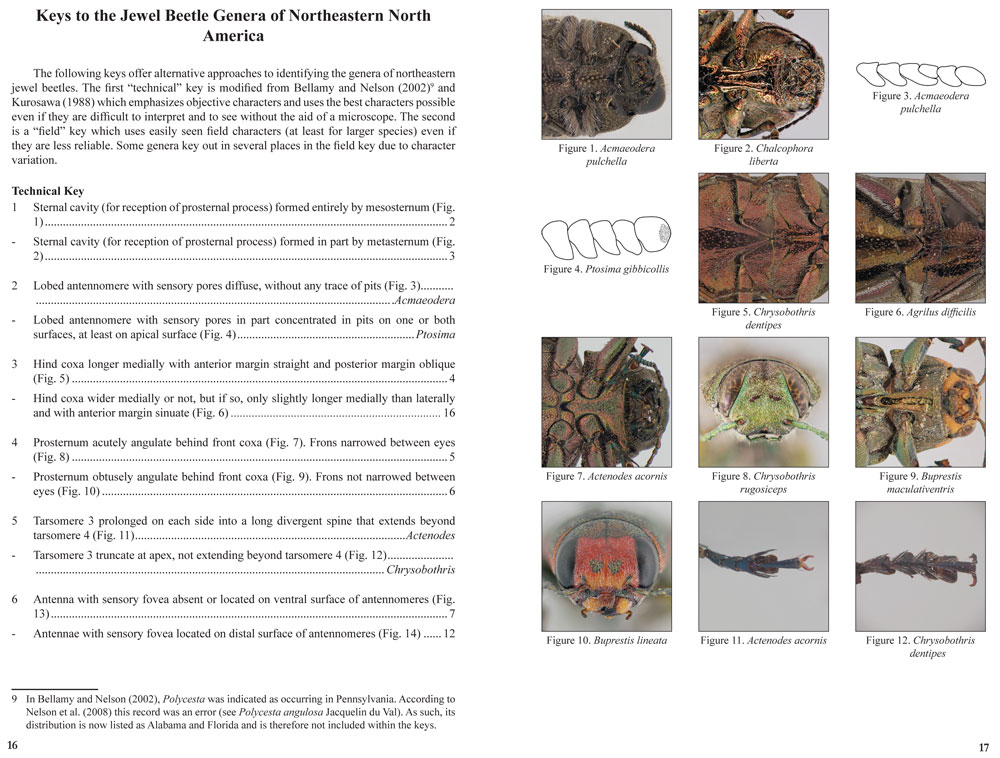
Sample key to genera page. All characters used in the key are illustrated with either high magnification photographs or simple illustrations.
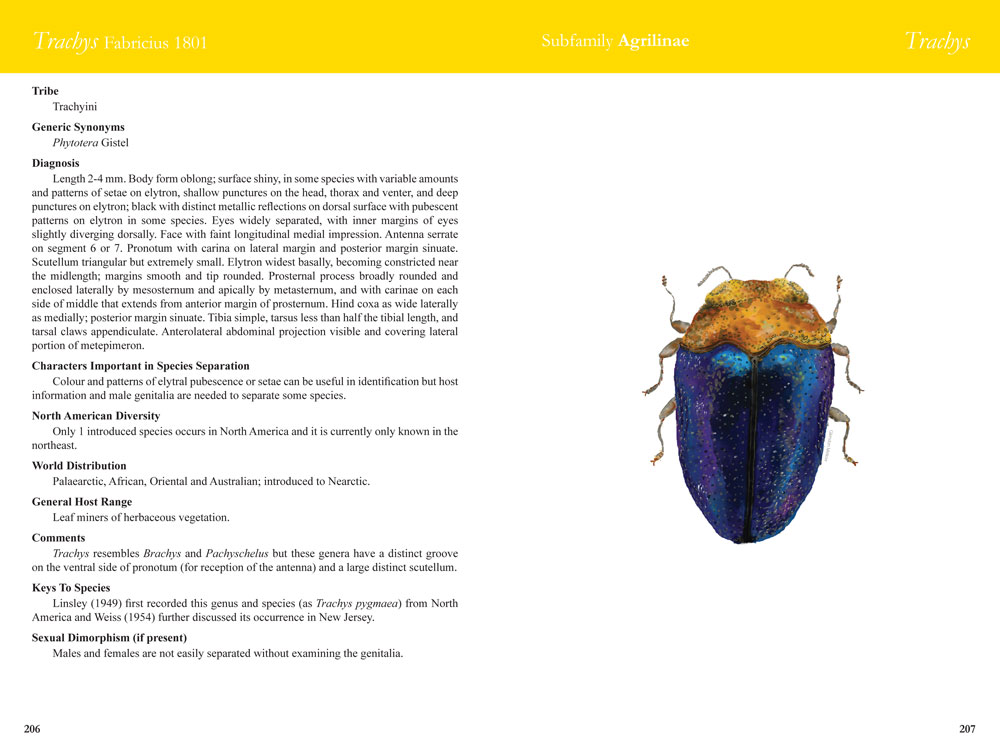
Trachys generic page from Field Guide to Jewel Beetles featuring original artwork by scientific illustrator/artist Glendon Mellow.

